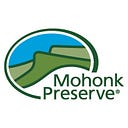Research Report #33— Yellow Lady-slipper
For many years scientists and naturalists have been studying and observing the flora and fauna of the Shawangunk Ridge. Foremost among them was Daniel Smiley, for whom Mohonk Preserve’s Daniel Smiley Research Center is named. Dan wrote numerous reports summarizing his observations on various topics. This regularly occurring series will feature some of these reports; some hold tremendous scientific value today and just await an interested researcher to follow up, others showcase a quirky sense of humor or highlight an oddity of nature.
Read the reports:
Yellow Lady-slipper. May 1977. Daniel Smiley.
Yellow Lady-slipper Decline. May 1984. Paul Huth and Dan Smiley. Natural Science Note №49.
A Note from Paul C. Huth, Director of Research Emeritus:
The Yellow Lady’s-slipper (Cypripedium parviflorum var. pubescens) is a member of the Family Orchidaceae, and one of two members of this native genus that are found in the Shawangunk Mountains. It has a New York State rarity rank of S3, meaning it is considered “vulnerable in New York State.” In 1977, Dan Smiley knew of the location of seven stands that had been found on Mohonk Trust land. One, on the East slope of the mountain, is the focus his report.
The location of this Yellow Lady’s-slipper stand has been of interest to Dan and me for some time, mainly for its relation to Shawangunk Mountain cultural land use history. On that slope, in what is now tall mature forest, was once a concentration of charcoal production and cordwood harvest. From the mid-19th century charcoal production on the Shawangunk ridge was an intense and highly concentrated process of repeated burning of open pits some 30 feet in diameter located by knowledgeable local burners close to accessible stands of hardwood forest. This intensive production lasted into the early 20th century. Each burn, consuming some 10–15 cords of wood, produced some 400–500 bushels of charcoal. It was a very impactful and dirty business. There was almost complete removal of the forest canopy in many areas and considerable surface disturbance as evidenced from historic photographs and documented accounts and memories. Today, on Mohonk Preserve land alone, over 50 charcoal pit bases can be found.
Surprisingly, research has shown that many of the terrestrial orchids of New York State, like the Pink and Yellow Lady-slippers, among others, are actually early colonizers of disturbed sites. This fits in well with the history of the study site, where several 19th century charcoal pits are still visible with a faint access road running up to them through the woods. The whole steep slope in that area would have been cut over, possibly more than once over the decades. The origin of this Yellow Lady-slipper stand is unknown. However, Dan first noted the site in 1931. From occasional visits around the expected time of flowering revealed an average date of bloom of 17 May. For 10 years, from 1967–1977, a count of the number of blossoms was made. In 1967, 172 were counted! It must have been a remarkable sight. Sadly, over the next 8 years, blossom numbers declined precipitously, the last seen in 1975. An annual count of the number of plants was made starting in 1973. While the number varied some up and down, from a high of 53 in 1977, the overall trend was downward. I well remember going out each spring and checking the stand for plants and flowers. There was no bloom observed from 1976 to 1981. Only 1 flower was found in 1982, 3 in 1983, and 1 again in 1986, the last. The number of plants dropped to the single digits in 1985 and after, to none in 1999 and 2000, and only 1 in 2002. While we feel certain there is still a viable seed bank from this stand, we are not sure if any viable rhizomes still exist. We had to conclude that from 1986 onward, this stand has been genetically extirpated. Why?
Dan, being the careful observer, noted in his species card file in 1950, “very few blossoms, leaves apparently eaten by deer.” In 1977, he recorded “a deer trail goes through the middle of the site.” In addition, Ruth H. Smiley, observing a transplanted clump near her home, reported to Dan seeing, in addition to Deer, a Cottontail eat a blossom. Wondering how browsers hone in on the Yellow Lady’s Slipper blossoms, if not in clear sight, I smelled one at full bloom, and was surprised by a very faint sweet fragrance. Burroughs noted a faint fragrance from the blossom also, but felt it had more offense, “a heavy oily odor.”
We have puzzled for many years over the possible reasons for the decline of this stand, and others known. The potential causes we have theorized include browse, soil pH and acid rain, availability and sustainability of essential fungal mycorrhizae for seed germination and plant life, tree canopy closure, relation to charcoal pit chemistry, and, maybe the most important, lack of site disturbance.
However, passing by the location of another of the old stands of Yellow Lady’s-slipper on 25 May of 2005, I was surprised to see a single plant in bloom on the edge of a roadside ditch. A careful search nearby in the area of the old stand revealed no other plants. Under stiff competition from adjacent vegetation, we found the same plant produced two flowers in 2009. In 2010, a ribbed seed capsule from the 2009 flowering was noted. Since then, while this plant survives, Deer browse of flowers seems to be a major problem.
While we know other stands exist, we felt it helpful to present our regular observations and monitoring of this particular population which revealed it’s change over time.
Read the reports:
Yellow Lady-slipper. May 1977. Daniel Smiley.
Yellow Lady-slipper Decline. May 1984. Paul Huth and Dan Smiley. Natural Science Note №49.
